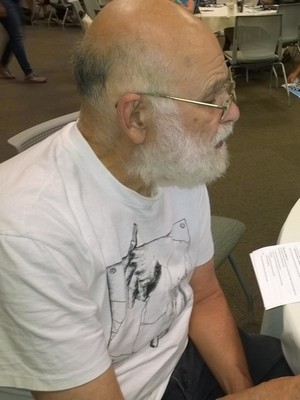
Toposes, Triples And Theories
This book is an introduction to toposes, triples and theories and the connections between them.
Tag(s): Category Theory
Publication date: 30 Nov -0001
ISBN-10: n/a
ISBN-13: n/a
Paperback: n/a
Views: 22,887
Type: N/A
Publisher: n/a
License: n/a
Post time: 09 Dec 2009 11:21:52
Toposes, Triples And Theories
 This book is an introduction to toposes, triples and theories and the connections between them.
This book is an introduction to toposes, triples and theories and the connections between them.
Publication date: 30 Nov -0001
ISBN-10: n/a
ISBN-13: n/a
Paperback: n/a
Views: 22,887
Document Type: N/A
Publisher: n/a
License: n/a
Post time: 09 Dec 2009 11:21:52
Michael Barr wrote:Copyright 2000 by Michael Barr and Charles Frederick Wells. This version may be downloaded and printed in unmodified form for private use only.
Excerpts from the Preface:
Michael Barr wrote:As its title suggests, this book is an introduction to three ideas and the connections between them. Before describing the content of the book in detail, we describe each concept briely. More extensive introductory descriptions of each concept are in the introductions and notes to Chapters 2, 3 and 4.
A topos is a special kind of category defined by axioms saying roughly that certain constructions one can make with sets can be done in the category. In that sense, a topos is a generalized set theory. However, it originated with Grothendieck and Giraud as an abstraction of the properties of the category of sheaves of sets on a topological space. Later, Lawvere and Tierney introduced a more general idea which they called "elementary topos" (because their axioms were first order and involved no quantification over sets), and they and other mathematicians developed the idea that a theory in the sense of mathematical logic can be regarded as a topos, perhaps after a process of completion.
The concept of triple originated (under the name "standard constructions") in Godement's book on sheaf theory for the purpose of computing sheaf cohomology. Then Peter Huber discovered that triples capture much of the information of adjoint pairs. Later Linton discovered that triples gave an equivalent approach to Lawvere's theory of equational theories (or rather the infinite generalizations of that theory). Finally, triples have turned out to be a very important tool for deriving various properties of toposes.
Theories, which could be called categorical theories, have been around in one incarnation or another at least since Lawvere's Ph.D. thesis. Lawvere's original insight was that a mathematical theory--corresponding roughly to the definition of a class of mathematical objects--could be usefully regarded as a category with structure of a certain kind, and a model of that theory--one of those objects--as a set-valued functor from that category which preserves the structure. The structures involved are more or less elaborate, depending on the kind of objects involved. The most elaborate of these use categories which have all the structure of a topos.
Tweet
About The Author(s)
Peter Redpath Emeritus Professor of Pure Mathematics, Department of Mathematics and Statistics, McGill University.

Peter Redpath Emeritus Professor of Pure Mathematics, Department of Mathematics and Statistics, McGill University.
No information is available for this author.